Civil

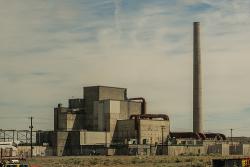
In the first nine months of operation, the B reactor produced fissionable plutonium for the world's first atomic bomb (the Trinity test on July 16, 1945), and for the atomic bomb that was dropped on Nagasaki, Japan, on August 9, 1945, killing 35,000 people. This, and similar destruction at Hiroshima caused by the atomic bomb dropped three days earlier, hastened the end of World War II.
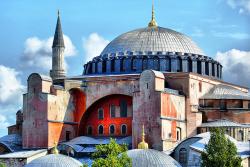
The church of Hagia Sophia (literally "Holy Wisdom") in Constantinople, now Istanbul, was first dedicated in 360 by Emperor Constantius, son of the city's founder, Emperor Constantine. Hagia Sophia served as the cathedra, or bishop's seat, of the city. Originally called Megale Ekklesia (Great Church), the name Hagia Sophia came into use around 430. The first church structure was destroyed during riots in 404; the second church, built and dedicated in 415 by Emperor Theodosius II, burned down during the Nika revolt of 532, which caused vast destruction and death throughout the city.
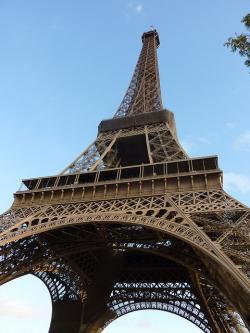
The Eiffel Tower was built for the International Exhibition of Paris of 1889 commemorating the centenary of the French Revolution. Of the 700 proposals submitted in a design competition, Gustave Eiffel's was unanimously chosen. At 300 meters and 7,000 tons, it was the world's tallest building until 1930.
The elevators ascend and descend within the curved legs of the tower, starting at an angle of 54 degrees from horizontal at the base and leveling out to 78 degrees at the top. The elevator cars are built with seatbacks that rotate to adjust to the varying angle.
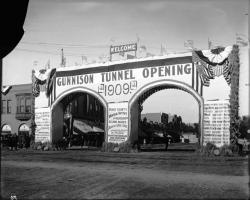
At its completion, the 5.8-mile Gunnison Tunnel under western Colorado's Vernal Mesa was the longest irrigation tunnel in America. It carried water from the Gunnison River to the Uncompahgre Valley to irrigate 146,000 acres of cropland.
Work on the 30,582-foot tunnel was first performed manually. Adverse geological conditions provided great challenge for this pioneering project. The drilling crews had to deal with clay, sand, shale, and a badly fractured fault zone.
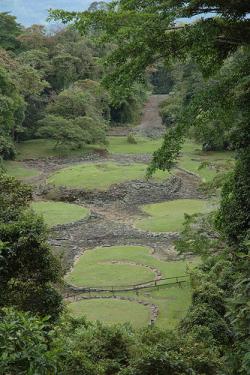
The early people of Costa Rica in the present-day area of Turrialba in Cartago Province built this ceremonial center with care and precision, and it is the country's primary and most important archaeological site. The Guayabo National Monument is of international significance because of its extensive roadways, retaining walls, underground channels, water supply, and flood control and drainage facilities that represent early civil engineering achievements by pre-Columbian people.
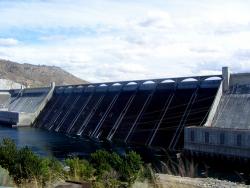
The massive Grand Coulee Dam, on the Columbia River, is the largest concrete structure in the U.S., the largest hydroelectric facility in the U.S., and the sixth-largest hydroelectric facility in the world. It provides irrigation for up to 1.1 million acres of agricultural lands and the hydroelectric complex maintains a generating capacity of 6.8 million kilowatts. It also serves as the primary flood control for the Columbia River basin (with a capacity of 5.18 million acre-feet of water) and provides recreational opportunities on the 150-mile-long Franklin D. Roosevelt Lake.
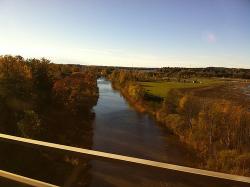
AleN Gothenburg State: Västra Götaland County Zip: Country: Sweden Website: http://www.asce.org/Project/Gota-Canal/ Creator: von Platen, Baltzer, Telford, Thomas
The Gota Canal is the biggest infrastructure project ever built in Sweden. The canal was dug by hand with shovels made of wood. It took over 22 years of 12-hour days - an estimated 12 million man-days of labor - to complete the project.
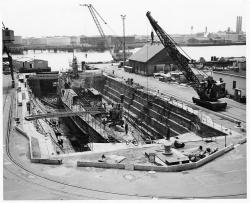
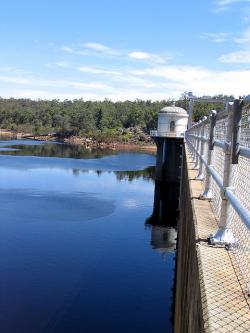
Originally known as the Coolgardie Goldfields Water Supply Scheme, the Goldfields Water Supply, Western Australia, has exceptional and unique cultural significance for Australia. Western Australia's first Premier, the dynamic and visionary Sir John Forrest, recognized the need for this extraordinary project to support the young and burgeoning gold mining industry in the dry interior of the state. In 1896 he directed C Y O'Connor, the colony's first Engineer-in-Chief, to find a permanent solution to the water supply problem in the area, which lacked any permanent surface water supplies and


